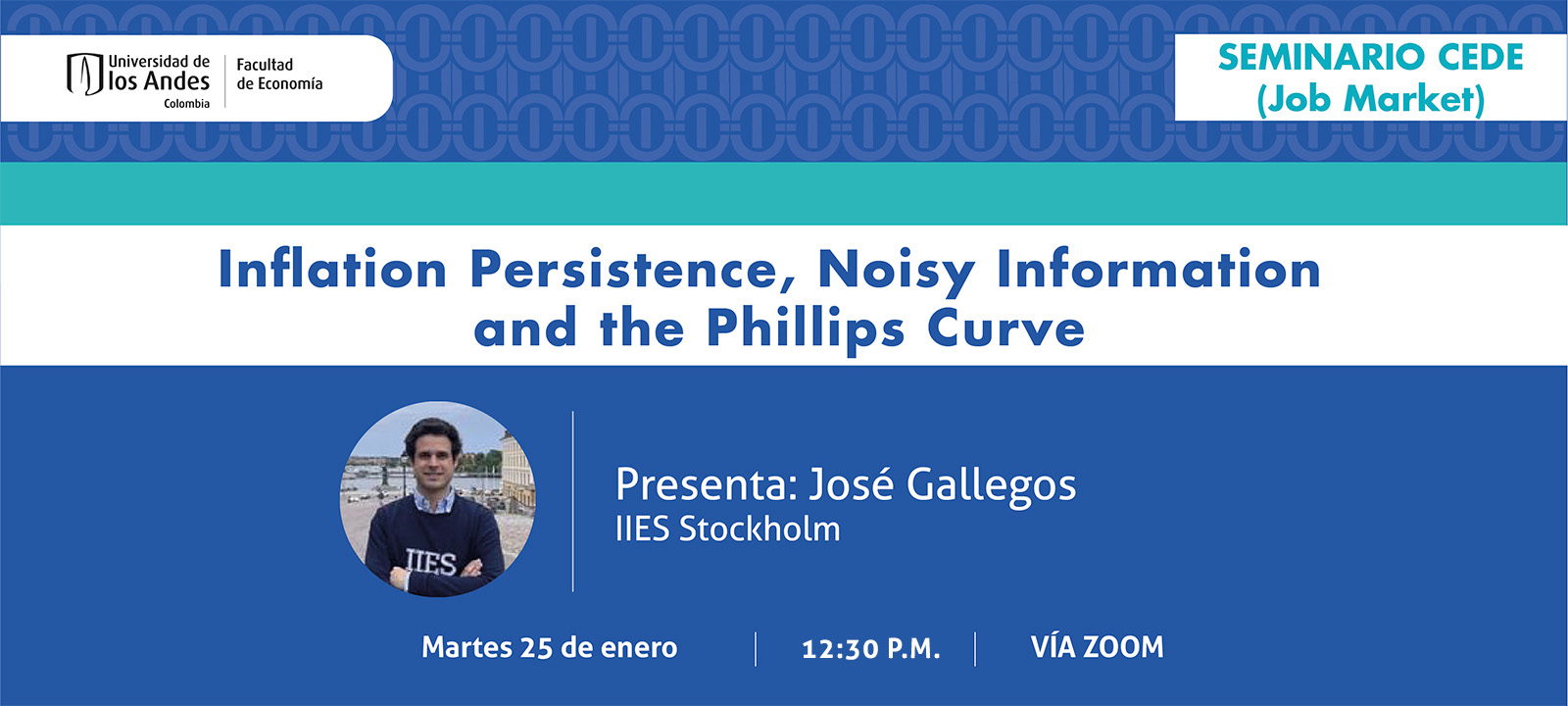Seminario CEDE - José Gallegos

A vast literature has documented that US inflation persistence has fallen in recent decades. However, this empirical finding is difficult to explain in monetary models. Using survey data on inflation expectations, I document a positive co-movement between ex-ante average forecast errors and forecast revisions (suggesting forecast sluggishness) from 1968 to 1984, but no co-movement afterwards. I extend the New Keynesian (NK) setting with noisy and dispersed information about the aggregate state, and show that inflation is more persistent in periods of greater forecast sluggishness. My results show that the change in firm forecasting behavior, documented in survey data, explains around 90% of the fall in inflation persistence since the mid 1980s. I also find that the disconnect between inflation and the real side of the economy in recent decades can be explained by the change in information frictions. Contrary to the literature which has emphasized a flattening of the NK Phillips curve in recent data, I do not find any evidence of the change in the structural slope of the Phillips curve once I control for the change in information frictions.

